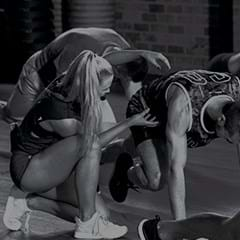There was a time when anyone would find puking after exercise extremely embarrassing, but there are now small groups of exercisers who thrive on it. And it gets more ridiculous. There are even some who push their bodies to the brink of death – and then want the t-shirt to celebrate it.
Yes, believe it or not, there are some fitness “freaks” who, after pushing their bodies to the point of serious illness and ending up in hospital, print t-shirts saying I survived rhabdo. Maybe I made ridiculous workout choices, got seriously ill and damaged my kidneys is harder to fit on a t-shirt.
So what is rhabdo?
Rhabdomyolysis is a very rare but very serious health condition. It occurs when overworked muscle fibers are shocked to the point they die and release their contents into the bloodstream. This can lead to severe muscle pain, weakness, vomiting, confusion and an irregular heartbeat. Since broken-down muscles release proteins such as myoglobin that can be harmful to the kidneys, sufferers also face kidney failure, and in rare situations, death.
But rhabdo is not exclusively associated with exercise. In fact, it is most commonly associated with crush injuries (such as those resulting from car accidents and falls). The first recorded diagnosis followed a Sicilian earthquake in 1908, and it was a recognized phenomenon in the London Blitz during World War II.
Rhabdo is also associated with drug addiction, severe infections, snake bites and strokes. People in very physically demanding professions are prone to it, too – one study indicated that around 400 active-duty US soldiers suffer from rhabdo each year.
But it’s courtesy of exercise-induced rhabdo that the medical term’s notoriety has grown, making rhabdo a badge of honor in some circles.
“There is nothing positive about reaching the state of rhabdo,” says Dr Jinger Gottschall of Pennsylvania State University. “You do not earn an award and it is not cool ... The only thing you gain is unwanted time away from exercise in order to recover.”
Real respect, she stresses, should be due those individuals who train hard yet smart – “those who train to their maximum capacity for short periods of time and respect the necessity of rest intervals as well as rest days.”
How real is the risk?
Common sense suggests that for everyday exercisers the risk of rhabdo is extremely slim. Gottschall says that in her 20-plus years of working in exercise physiology, as well as teaching and participating in group fitness, she has never witnessed anyone suffer rhabdo.
The real risk of rhabdo is the bad press it’s creating.
With a huge proportion of the developed world’s population not exercising enough, the last message anyone needs to be sending is that exercise can be bad for you. Each year approximately 3.2 million deaths are attributed to insufficient physical activity. Comparatively, rhabdo affects a miniscule proportion of the population, and the incidence of death is extremely rare.
As the global expert on intense interval training, Dr Martin Gibala, says, “Let’s remember, the greater health risk is remaining sedentary and staying on the couch!”
THE SAFE WAY TO TRAIN HARD
- Teach yourself to listen to your body and recognize the difference between overload for results and overload that can cause damage. Warning signs include: feeling lightheaded or dizzy, vision problems, and nausea. If you experience these symptoms during exercise, please stop.
- It is not ideal to perform high-intensity exercise if you are already sore from previous training sessions, suffering from a virus, or are dehydrated.
- Monitor your training intensity with a heart rate monitor and chest transmitter (the Polar A370 with H7 transmitter is a great option). After completing the personal information in your profile, you can continually observe your training zone to ensure you are exercising at an intensity level that will produce results without injury.
- Choose proven programming, such as LES MILLS™ workouts, that are designed for varying levels of fitness and backgrounds.
Follow these commonsense guidelines and you’ll never suffer rhabdo, and you’ll never need to get that t-shirt.
Follow the freshest thinking @fitplanetmag.








